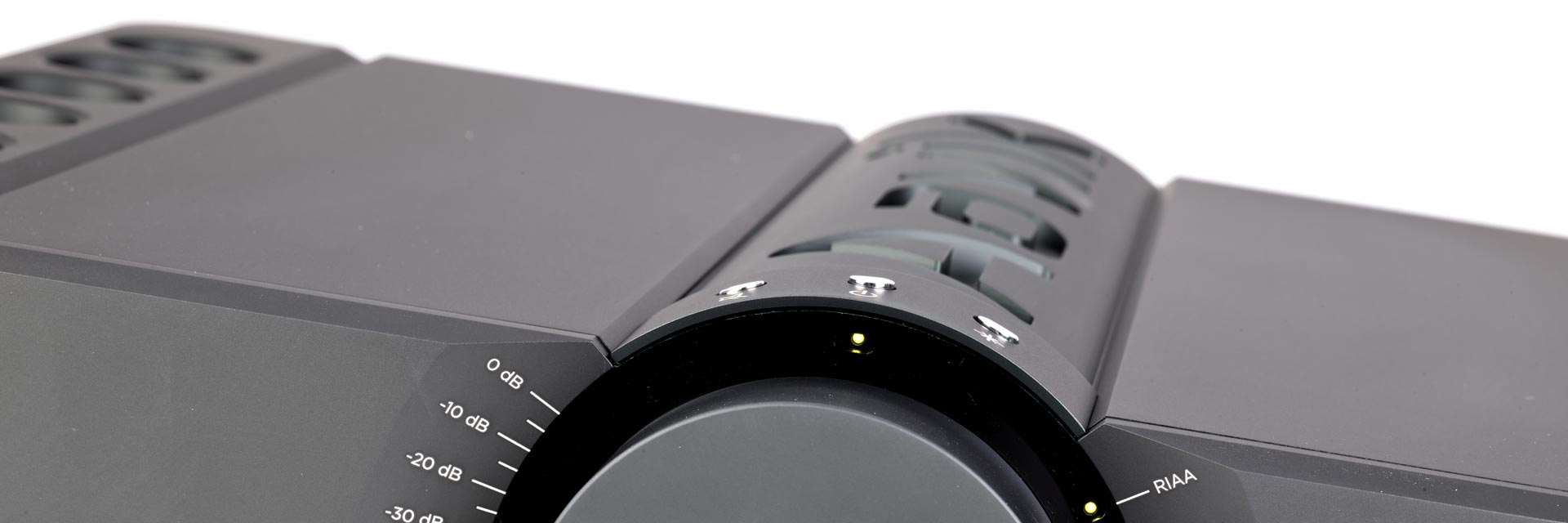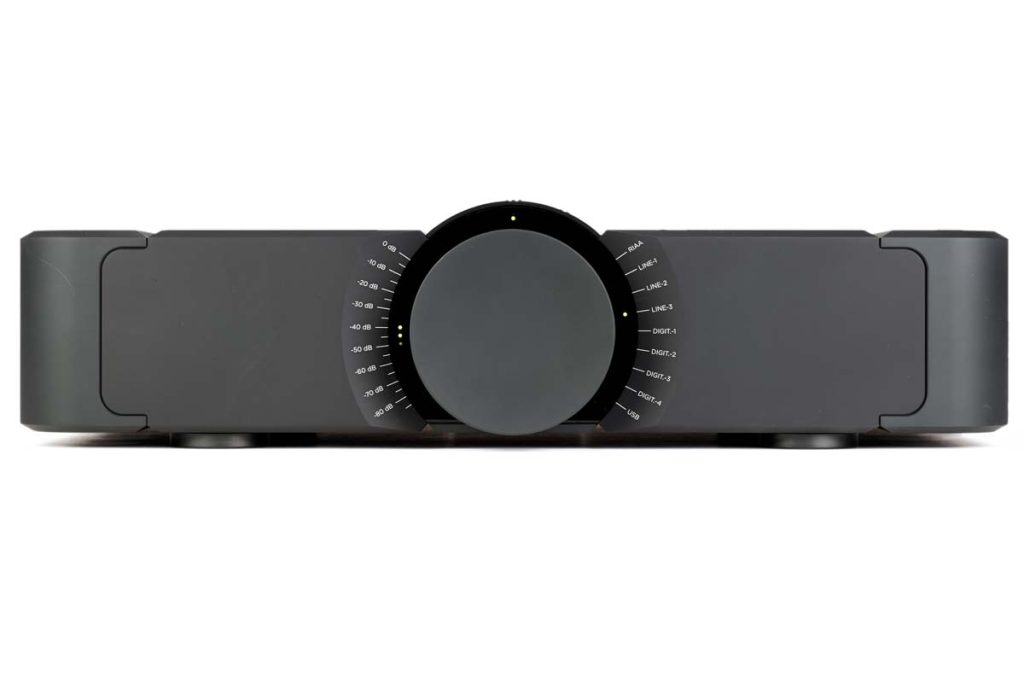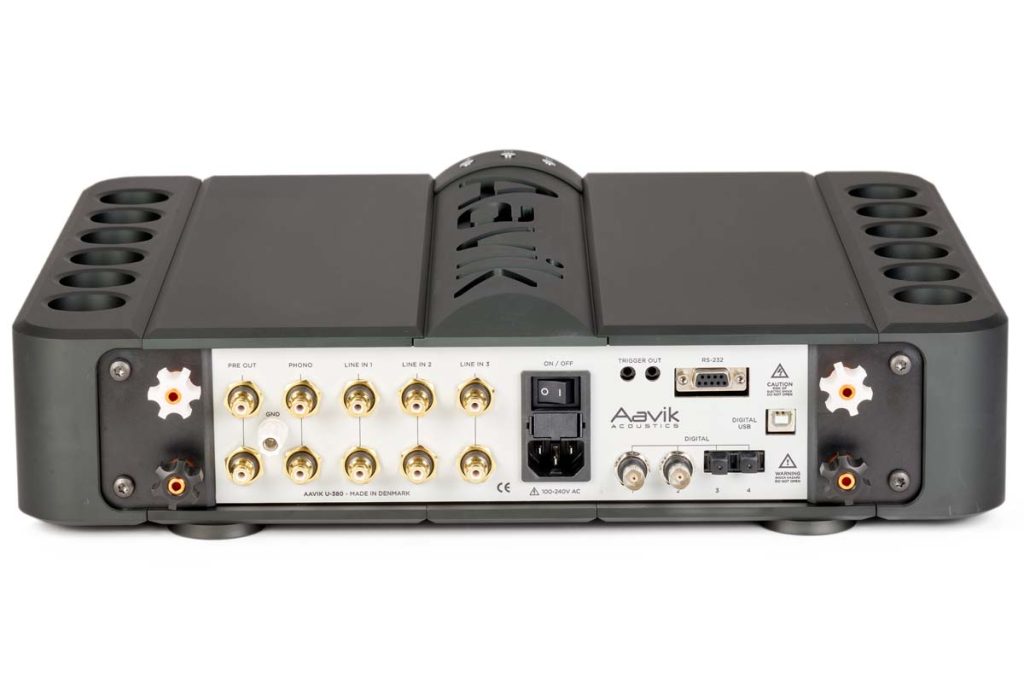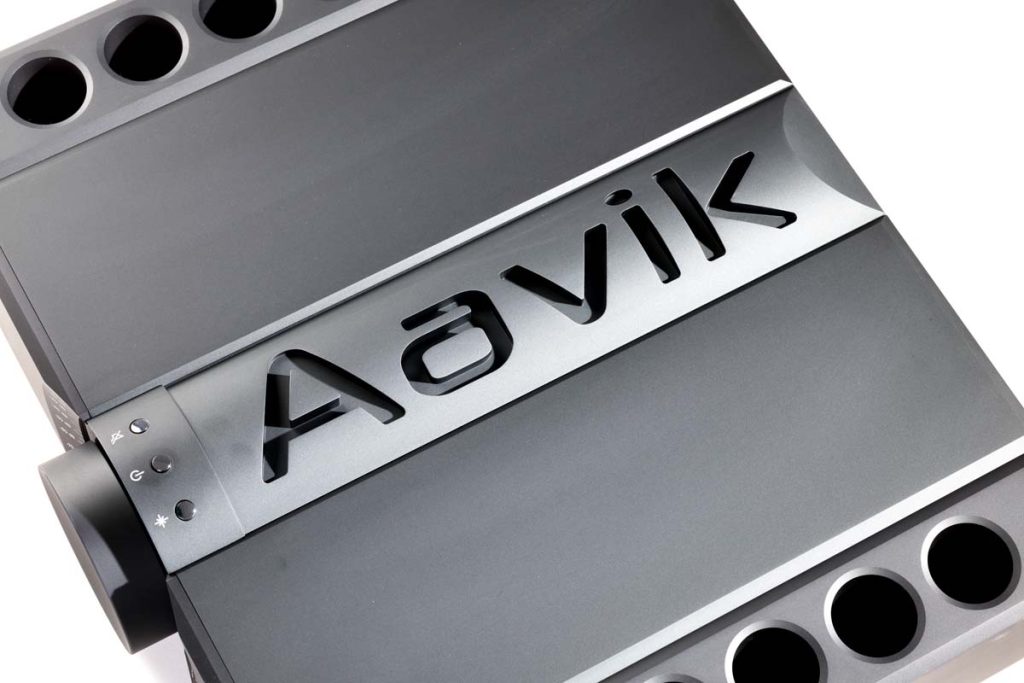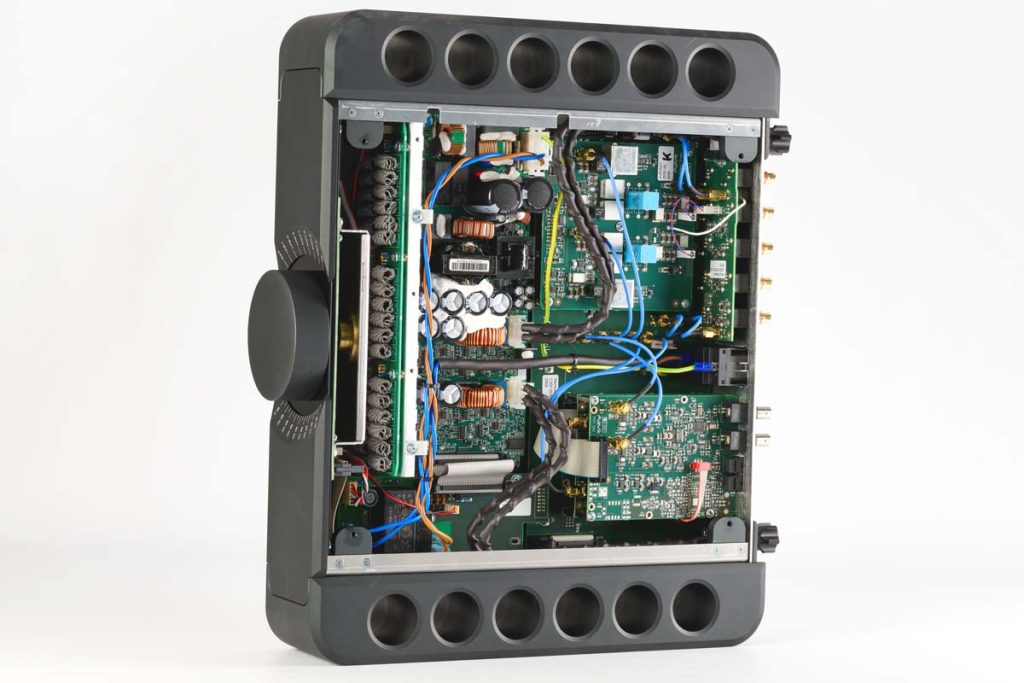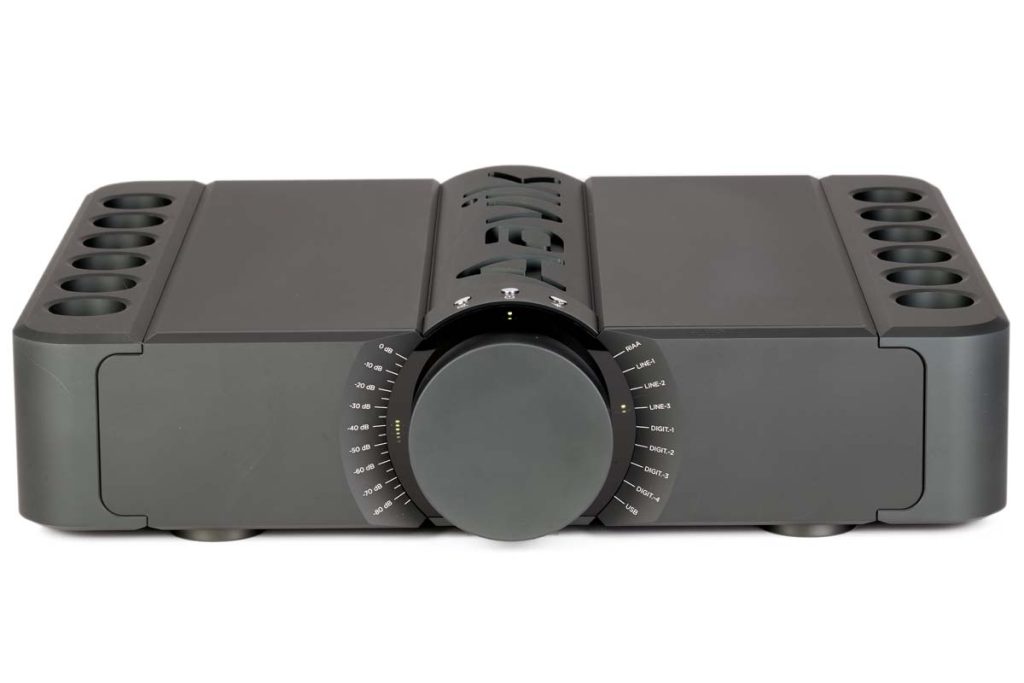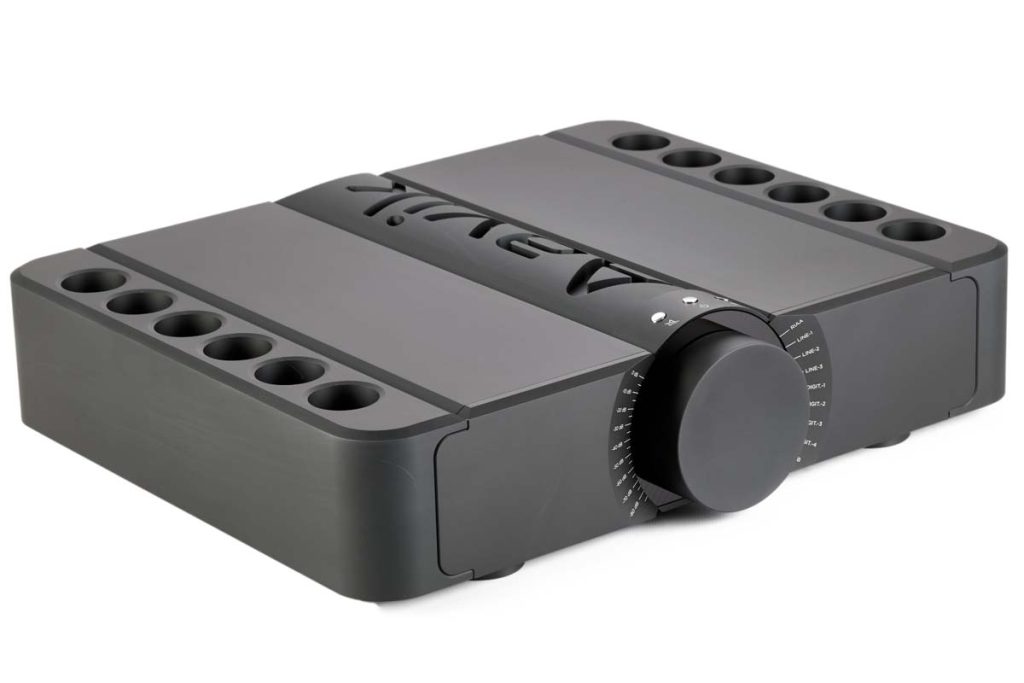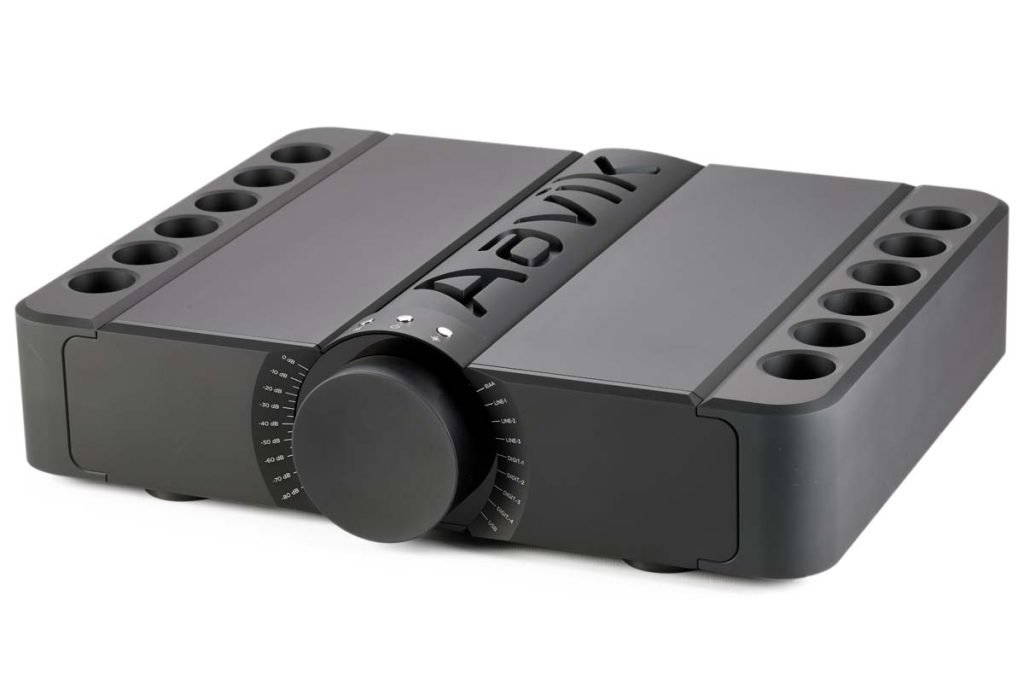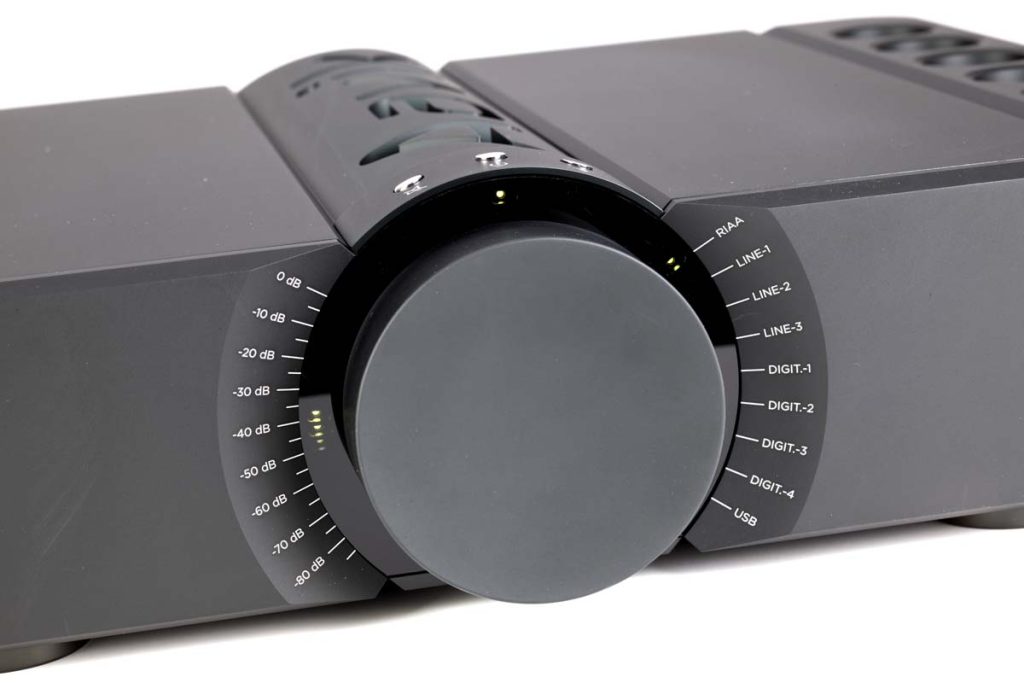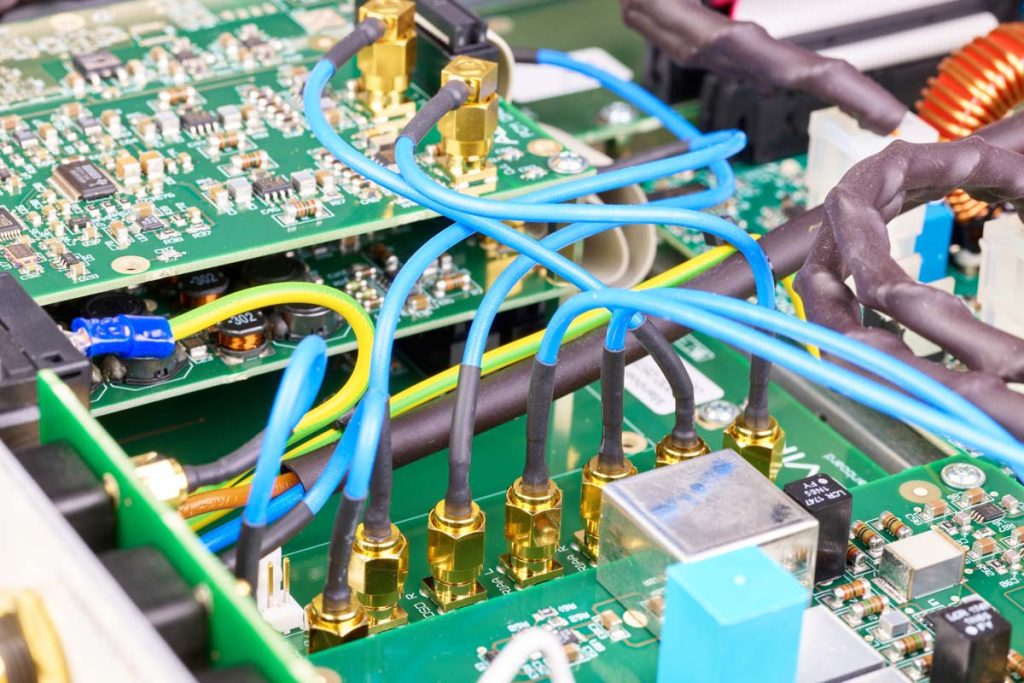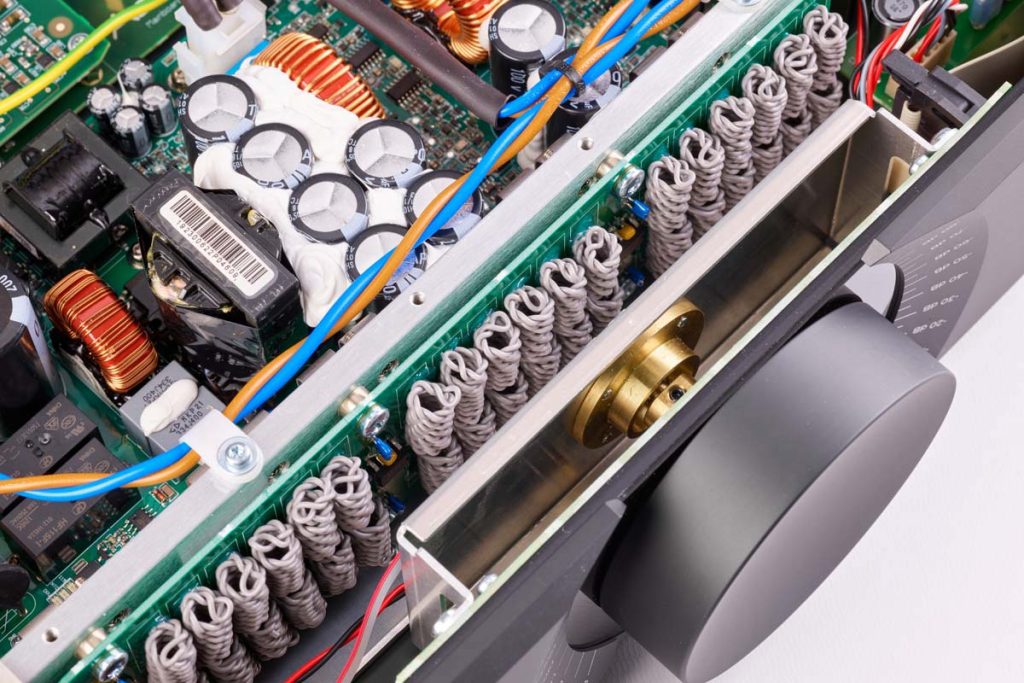If the Danish high-end, small-scale manufacturing company Aavik gets to decide, “integrated” is the new “separate”.
One of Belgian artist René Magritte’s most famous paintings shows a pipe with words underneath that read: “Ceci n’est pas une pipe.” This is not a pipe. Of course, we all know it’s a pipe. So what’s the artist trying to say? I had a chat over the phone with Michael Børresen about the Aavik U-380 integrated amplifier. You can purchase the device, whose analog section was developed by Børresen, from the Danish small-scale manufacturing company for a cool €36,000. I couldn’t help but ask the obvious question: “What could possibly make an integrated amplifier that expensive?” To which Børresen replied: “This isn’t an integrated amplifier.” Well, he didn’t use those words exactly. What he actually said was: “It’s not about the amplifier at all. Look at the modules! The phono stage! The DAC!” As he said this, he dropped the names of the top-ranking specialists in these fields into the conversation. “The U-380 is on a par with them!”
The Aavik U-380, as Børresen sees it, is a world-class MC phono stage with precisely adjustable impedance, a superb D/A converter with the option of one or two DAC modules for PCM and DSD, and an analog amplifier section with class-D technology that, in terms of sound quality, holds its own against the best class-A amps out there. And it’s all beautifully combined in an eye-catching housing that boasts impressive workmanship.
Quirks abound: The power cable that’s not furnished as standard, the flat metal feet actually put there as retainers for the Darkz tuning feet sold separately by the subsidiary company Ansuz, and the remote control supplied by Apple. Børresen has an answer for everything though, turning it back on me with a question that went something like this: When was the last time you plugged in a new high-end component using the power cable that came furnished as standard? Exactly!
A pleasant case of unequal treatment
Fresh out of the box, the U-380 looked like a sculptural work of audio art and weighed in at just under 17 kilos. On the very top shelf of my rack, where the amplifier belonged not least because of the CNC-milled brand name proudly running the full depth of the housing, the U-380 looked like something straight out of the Batcave or Darth Vader’s private listening room. Despite it having numerous inputs, a powerful DAC section, and an adjustable phono stage, my first glance at it didn’t reveal any displays designed to provide information on the relevant operating mode. Its only controls consist of three push buttons and one rather prominent large rotary knob (actually a dial) given pride of place right in the middle of the front panel. That knob is surrounded by a ring of white LEDs — and there you have it: the display. The rotary encoder is the input device. Users can switch between level control, balance, source selection, gain, and phono input impedance by either pressing the buttons briefly or holding them down for longer. This all works very well and you feel a bit like you’re in a luxury sedan with iDrive or Command Controller at your fingertips.
The phono stage of the otherwise asymmetrical Aavik U-380 has a fully discrete, balanced, floating design. The amplification requires bipolar transistors featuring an ultra-low-noise BISS design (Aavik claims an incredible signal-to-noise ratio of 94 decibels). Børresen prefers this type to field-effect transistors, which he says result in a somewhat sober and muted sound profile. The U-380’s impedance-adjustment feature boasts an impressive 18 increments, including the basic parameters of 50 ohms and 10,000 ohms. Thanks to the smooth operating concept, users can switch between options at the flick of a wrist, quite literally.
Aavik’s built-in DAC processes PCM and DSD formats in a rather unusual manner. Nothing would be simpler these days than sending both through the same converter. But the Danes have opted for unequal treatment and developed two DAC modules: one exclusively for PCM up to 24-bit resolution and 192-kilohertz sampling frequency with a Burr-Brown 1794A converter chip, and one for DSD that has the analog signal available at the output of a low-pass filter. The customer gets to choose: The U-380 comes fitted with the PCM module as standard and in this setup can even be equipped with two phono stages. Alternatively, the customer can also opt for the PCM-DAC for the DSD circuit board, in which case there’ll only be room for one phono input.
As the central class-D amplifier powers the DACs, an armada of voltage regulators on the modules ensures there’s absolutely no trace of the switched-mode power supply’s high-frequency tinkering there. Four clocks guarantee low-jitter timing: one on the S/PDIF input and two on the asynchronous USB input, with the fourth taking care of the upsampling and the DAC. Without exception, all signals passed on digitally are upsampled in the U-380 to 200 kilohertz. What’s the source for this unusual figure? Børresen has an explanation: “The frequency had to be above the highest possible externally supplied sampling frequency of 192 kilohertz. And the Burr-Brown chip accepts a maximum of 200 kilohertz. Hence the 200 kilohertz figure.”
The power gain takes place in a component made by the Danish switching amplifier specialist Pascal Audio. Børresen makes no bones that his preferred choice would have been a class-A power amplifier if there had been more space available. But that was never an option with the tightly packed U-380, especially since the power gain featured needs to live up to that description. And so, Børresen opted for the Pascal M-Pro2 module, albeit with a modified input stage.
I found the volume control particularly fascinating. The level is controlled through a resistor network located in the negative feedback loop of the amplifier circuit. As negative feedback and gain are directly connected, the harmonic distortion is reduced when the music is turned down. As a result, every input has an input stage — and the source is selected by muting the inactive inputs.
Then there are the coils
“Tesla coils” — that’s the name Aavik has given the wraps elaborately made from gray insulated wire that occupy a long circuit board immediately behind the front panel. They have absolutely nothing to do with the Tesla transformers from physics lessons at school that produce spectacular sparks. Børresen did, however, eagerly point out that the great Nikola Tesla was a source of inspiration for his own method for suppressing interference in a high-frequency environment. Only he knows exactly how it works — but in any case, what really matters is this: Does it sound good?
Oh yes. Very good, in fact. Actually, amazing, to be precise.
Børresen is right: The Aavik U-380 isn’t an integrated amplifier with phono and digital input. At least not the kind of integrated amplifier where you ask if the DAC and the phono input are any good. The U-380 couldn’t be any further removed from that type of integrated amplifier if it tried. There’s absolutely no doubt whatsoever that any of the three sections would be able to hold their own in terms of sound quality compared with the very best separate components available on the market. Together they form a single device that boasts incredibly spectacular balance. Provided that adequate analog and digital signal sources have been chosen, the seemingly never-ending battle raging on between vinyls and HD streaming has suddenly become a total nonissue, given the high-class setup. Digital and analog playback actually sounded identical, with crystal-clear clarity over a very broad range, where necessary with shockingly impressive dynamics and, best of all, holographic three-dimensionality.
I placed a jazz vinyl on the platter of the dps 3 and lowered the Lyra Kleos down into the lead-in groove of the A-side of Sketches Of Spain. On the left side, the castanets click-clacked so convincingly it felt like a real-life Spaniard was standing behind the speaker. Not long after, bells began to chime in and their whirring silvery tinkling was extremely subtle yet at the same time vivid and easy to pick out. On the right side, a double bass kicked in with rhythmical pinpoint accuracy while first a gently breathing flutist then Miles Davis himself stood between the speakers, greeting me in person. From a musical perspective, I will still continue to find this album more entertaining than sophisticated — but, I have to say, even though you may be physically far away from the Iberian peninsula, you can really lose yourself in the virtual Spanish groove!
Inevitably, I couldn’t resist carrying out a comparison with my Bauer Audio Phono, also a pure MC equalizer. The results were so overwhelmingly positive in favor of the Aavik module that you would be forgiven for thinking that the Danish device had put up some built-in defense mechanisms during the test. I really value the minimalistic Bauer Audio as an especially clean and open-sounding tool that provides plenty of enjoyment. But when used in conjunction with the Aavik U-380, it sounded all out of sorts, while the Lyra system sprouted wings and soared as part of the team. My Aqua La Voce DAC similarly didn’t stand a chance. Upon initial contact with the Aavik, the Italian DAC was connected to one of the three high-level inputs and fittingly exhausted the output stage (just as a reminder: 600 watts at 4 ohms!) with a staggering level of detail and thrilling dynamics. Quick music tip: the Steve Gadd Band’s album 70 Strong — what incredible-sounding drums! Reconnecting the USB cable from the Innuos Zenith Mk III into the corresponding port on the Danish device grounded the whole affair. The sound profile mellowed, gained breadth and depth, grew more refined, and, yes, more sophisticated. There was no turning back here either — the Aavik DAC is absolutely world class!
But it gets better: Børresen dropped a bombshell by saying the U-380 only reaches around 30% of its potential without the tuning measures. So, a week later, the parcel delivery service dropped off a set of Ansuz feet with titanium balls by the name of Darkz C2t and an Ansuz Mainz A2 power cable. The feet, which simultaneously use hard vertical coupling and horizontal freedom of movement, visibly completed the U-380, equipped with the fitting counterparts, and audibly announced their presence by providing a more open and airy sound. The power cable, which replaced a large-diameter TMR version in my system, provided an extra touch of elegance — as if some as-yet unnoticed corners and edges of the music had suddenly been sanded, smoothed, and polished.
Whether it’s an integrated amplifier or not, the Aavik U-380 is the musical equivalent of a magnifying glass. It extracts maximum information from both digital and analog signals, resulting in magnificent music. But I wouldn’t simply recommend the Danish device for anyone and everyone as I have my reservations. If you’re definitely not prepared to part ways with your phono preamplifier, then the U-380 is not for you. The same applies if you’re especially fond of your DAC. It’d be an absolute crime to buy the U-380 and not use it to its full potential. The Danish three-in-one integrated amplifier wants to be the sole centerpiece in an exquisite, minimalistic analog-digital system. Anyone who grants it this responsibility will not be disappointed.
FIDELITY: What effect does the Tesla coils produce — they are seemingly not connected with the music signals in the Aavik U-380?
Michael Børresen: In the world of electromagnetic interference, everything is interconnected, even if there is no direct connection. The parasitic frequencies are disseminated through a variety of parasitic capacities across the circuit boards, switched-mode power-supply units, and transformers, etc.… As such, however, interference peaks can also be identified and eliminated even by components that are only connected with the rest of the device by means of the shared power supply. Stray radiation is an issue precisely for that reason as it’s easily disseminated through everything: through cables with antenna effect, through the power supply, through streaming and the Internet connection. Especially there.
Integrated amplifier
Aavik U-380
Concept: class-D integrated amplifier with MC phono equalizer and DAC featuring a modular design | Analog inputs: 3 x line-in (RCA), optionally 1 x or 2 x phono MC input (RCA balanced) | Digital inputs: 1 x USB (PCM 24/192, optionally DSD up to DSD128), 2 x BNC S/PDIF (24/192), 2 x TOSLINK optical (24/96) | Outputs: 1 x pre-out (RCA), 1 x loudspeaker (banana-compatible screw terminals) | Output power (8/4 Ω): 300/600 W | Special features: IR remote control, adjustable phono impedance, 2 x triggers 12 V (remote activation), RS-232 interface, prepared for Ansuz Darkz feet | Dimensions (W/H/D): 44/10/37 cm | Weight: 17 kg | Warranty period: two years | Price: about €36,000
Aavik Acoustics
Rebslagervej 4
9000 Aalborg
Denmark
Phone: +45 40 511431

